Mor Gabriel Monastery is located on a limestone plateau that stretches east from Mardin deep into the biblical Tigris Valley and is known to Eastern Christians as the "Mountain of the Servants of God" (Tur Abdin).
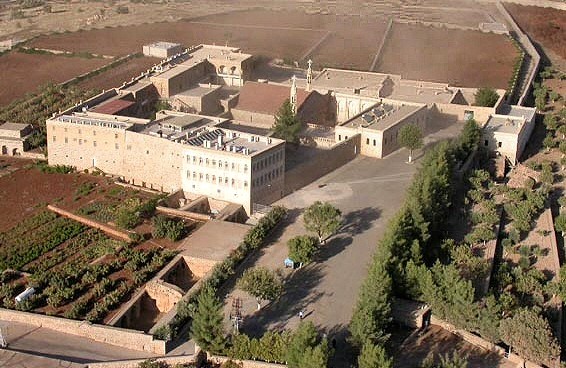
The monastery is said to have been founded as early as 397, when the culture of the Syrian Orthodox Christians, who also call themselves Assyrians, flourished in upper Mesopotamia. At that time, dozens of famous monasteries with thousands of monks and hermits were founded here. Mor Gabriel is one of the few witnesses to this advanced civilisation. Built of the characteristic beige limestone of the region, the monastery is also the spiritual centre of the Syrian Orthodox Christians of Mesopotamia.
The monastery was an independent diocese until 1915. In that year, during the genocide of the Christian minorities, all the inhabitants of the monastery were killed at the instigation of the Ottoman government by Muslim Kurdish Agas (large landowners) organised in paramilitary so-called Hamidiye militias.
It was not until 1919 that Syrian Christians were able to occupy it again. In the 1950s, renovation and extension work began and a seminary was established (which was closed again by the Turkish government in 1980). In the following decades, water and electricity supplies were installed and a road to the monastery was built. A garden was also laid out for the residents' self-sufficiency. A few years ago, a wall was built around the monastery to protect the extensive monastery gardens and the areas important for the monastery's independence from invading cattle herds.
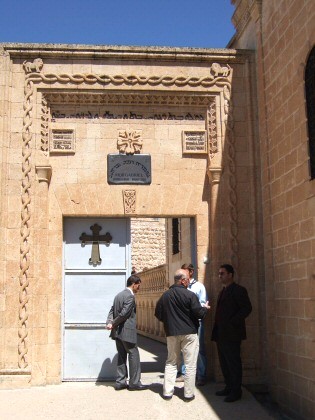
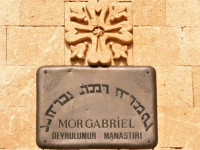
Here we are at the monastery gate
We come to a forecourt and look at the towers of the church below.
The monastery buildings were restored and adapted to modern needs.
Entrance to the monastery and the lower main church.
The monastery is located on different levels.
Light streams into the barrel-shaped hall of the church. It was begun in 397 by the founders of the monastery of Mor Samuel and Mor Simon as a simple house of prayer and completed with the support of the Byzantine Emperor Anastasias I in 512.
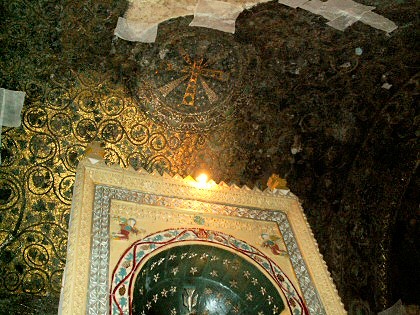
Very likely, everywhere here were magnificent mosaics. Remains are still present in the chancel.
Built at the beginning of the 6th century, the 17-meter high Theodora dome of the monastery is made of radially layered bricks and rests on walls of ashlar and mortar core. The inner diameter of the dome is 11.50 meters. The dome is named after Queen Theodora (497 - 548), wife of the Byzantine ruler Justinian I, who visited the monastery.
Here we are in St. Mary's Church - or what is left of it. It was built in the 5th century and was destroyed and looted several times.

Burial place of the last abbots of the monastery
The plaque shows the dates 1891, 1952 and 1984.
Abbot Sabo GŁnes, who started the restoration of the monastery after the 1915 massacre, died in 1962.
The catacombs (house of saints) date back to 449. Over the centuries, several saints (the guide mentioned the number 12,000) have been buried here.
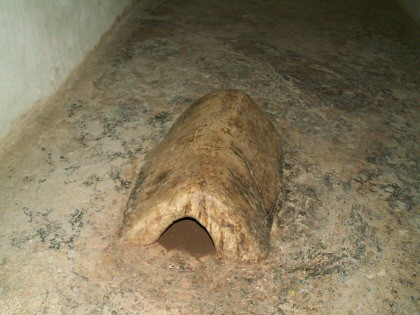
This is the tomb of St. Gabriel.
Pious pilgrims have been taking handfuls of sand here for centuries (which is always replenished - but comes into contact with the tomb).